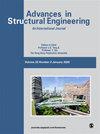Investigation on situation awareness model of unmanned aerial vehicle groups communication network based on adversarial network
IF 2
4区 工程技术
引用次数: 0
Abstract
With the widespread application and development of unmanned aerial vehicle (UAV) technology, ensuring the security and stability of UAV swarm communication networks has become crucial. Given the diverse forms of interference and attacks in current networks, this poses a serious threat to the normal operation of UAV swarm communication. Therefore, how to accurately identify and effectively counter these network threats has become the focus of research. This study comprehensively evaluates the core technology of UAV swarm communication network situational awareness and constructs a situational awareness model based on adversarial networks. The model utilizes adversarial network technology and combines data collection and processing to design four experiments to comprehensively evaluate the performance of the model in different scenarios. The experimental results show that as the amount of data gradually increases, the performance of the model also improves. When processing 100, 1000, and 10,000 data points, the model achieved accuracies of 0.955, 0.962, and 0.982, respectively. Furthermore, the experimental results also indicate that effective noise suppression measures can significantly improve the accuracy and stability of the situational awareness model. Additionally, it is noted that different model structures will affect training duration, accuracy, and stability. Although increasing network scale may lead to increased computational complexity and latency, its accuracy is correspondingly improved. The adversarial network-based situational awareness model proposed in this study can accurately identify and effectively counter interference and attacks in UAV swarm communication networks, thereby providing solid protection for the collaborative combat and information sharing of UAV swarms.基于对抗网络的无人机群组通信网络态势感知模型研究
随着无人机(UAV)技术的广泛应用和发展,确保无人机群通信网络的安全性和稳定性变得至关重要。鉴于当前网络中存在多种形式的干扰和攻击,这对无人机蜂群通信的正常运行构成了严重威胁。因此,如何准确识别并有效应对这些网络威胁成为研究的重点。本研究全面评估了无人机蜂群通信网络态势感知的核心技术,构建了基于对抗网络的态势感知模型。该模型利用对抗网络技术,结合数据采集与处理,设计了四个实验,全面评估模型在不同场景下的性能。实验结果表明,随着数据量的逐渐增加,模型的性能也随之提高。在处理 100、1000 和 10,000 个数据点时,模型的准确度分别达到了 0.955、0.962 和 0.982。此外,实验结果还表明,有效的噪声抑制措施可以显著提高态势感知模型的准确性和稳定性。此外,不同的模型结构也会影响训练时间、准确性和稳定性。虽然网络规模的扩大可能会导致计算复杂度和延迟的增加,但其准确性也会相应提高。本研究提出的基于对抗网络的态势感知模型能够准确识别并有效应对无人机群通信网络中的干扰和攻击,从而为无人机群的协同作战和信息共享提供坚实的保障。
本文章由计算机程序翻译,如有差异,请以英文原文为准。
求助全文
约1分钟内获得全文
求助全文
来源期刊

Advances in Mechanical Engineering
Engineering-Mechanical Engineering
自引率
4.80%
发文量
353
期刊介绍:
Advances in Mechanical Engineering (AIME) is a JCR Ranked, peer-reviewed, open access journal which publishes a wide range of original research and review articles. The journal Editorial Board welcomes manuscripts in both fundamental and applied research areas, and encourages submissions which contribute novel and innovative insights to the field of mechanical engineering
 求助内容:
求助内容: 应助结果提醒方式:
应助结果提醒方式:


